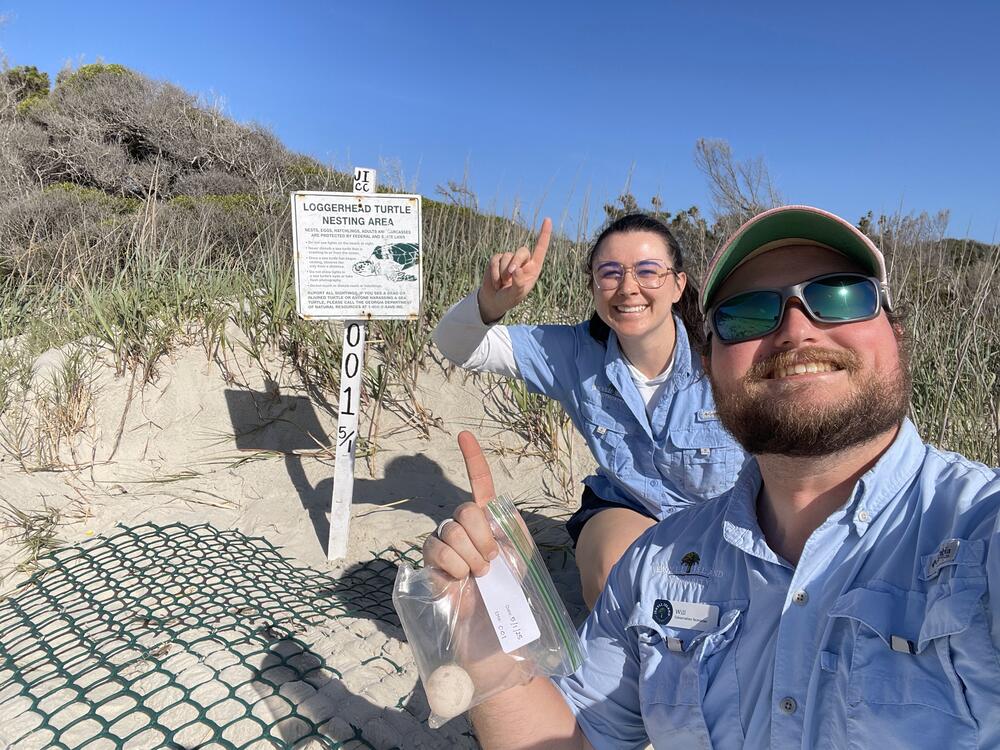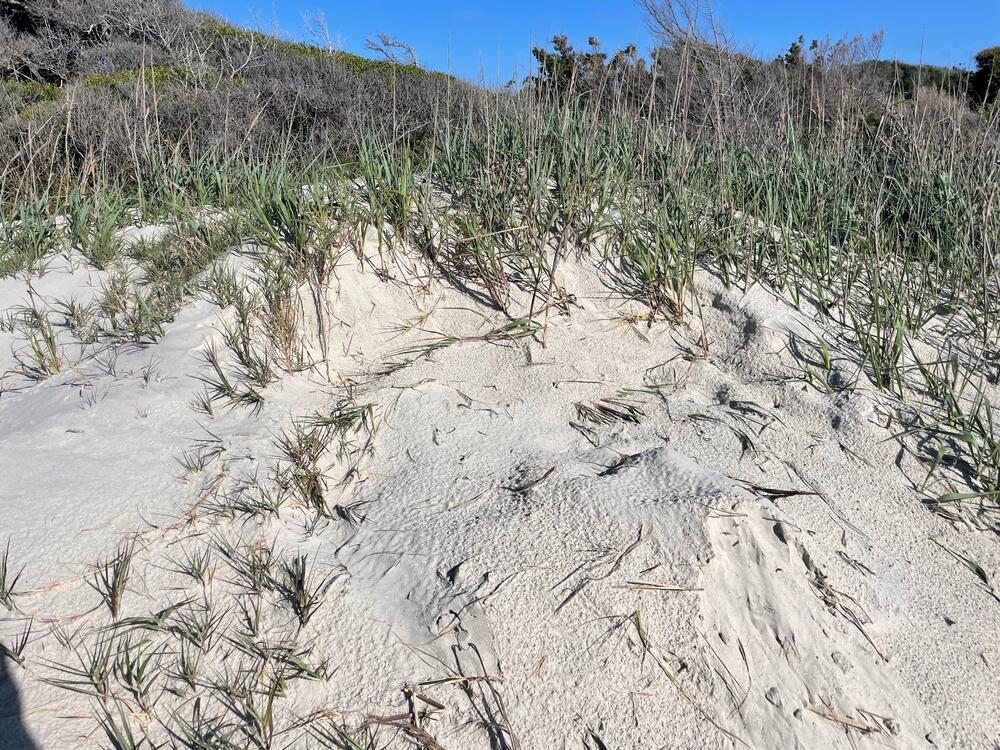
Caption
Jekyll Island Authority wildlife conservation technicians Bailey Yarborough and Will Hicks pose after finding Georgia's first sea turtle nest of the 2025 nesting season on May 1 along Glory Beach.
Credit: Jekyll Island Authority
LISTEN: Conservationists are preparing for a significant uptick in loggerhead nesting along Georgia's coast this summer. GPB's Benjamin Payne reports.

Jekyll Island Authority wildlife conservation technicians Bailey Yarborough and Will Hicks pose after finding Georgia's first sea turtle nest of the 2025 nesting season on May 1 along Glory Beach.
Sea turtles are expected to crawl ashore on Georgia's coastline in impressive numbers this nesting season, following the discovery of the state's first nest last week on Jekyll Island.
Conservationist technicians Will Hicks and Bailey Yarborough from the Jekyll Island Authority spotted the nest while patrolling Glory Beach on the south side of the island on Thursday at around 8 a.m.
"It was kind of funny: when we both got into the office that morning, we both said, 'We have a feeling today is the day,'" Hicks said. "But we never know until we get out there."
Hicks and Yarborough persisted despite challenging conditions that had obscured the mother's tracks.
"Usually we have pretty prominent signs a sea turtle crawled on the beach, but this crawl looked like it had been rained on the previous night — a combination of rain and wind obscured this crawlway," he said. "But we've been doing this for several years, so we know the signs to look for."
Their discovery sparked immediate celebration.
"We both got out of our UTV and literally jumped for joy," Hicks said. "It's always exciting when we get a nest first in the season."

Georgia's first identified sea turtle nest of the 2025 season, located on the south end of Jekyll Island along Glory Beach. Sea turtle mothers dig into the beach to create an egg chamber, where they lay around 100 eggs, before camouflaging the nest with sand.
The federally endangered species typically follows a three-year cycle of high-, medium-, and low-productivity seasons, according to the Georgia Department of Natural Resources.
Last year marked a low point in the cycle, with just over 2,490 nests recorded, falling below the recovery goal of 2,800 nests established in the federal recovery plan.
Georgia Sea Turtle Program Coordinator Mark Dodd predicts that 2025 will be "a big year for nesting" between now and October, when the season ends.
"That being said, our modeling suggests the loggerhead population will stabilize at current levels for about the next 15 to 20 years," Dodd said in a statement. "So we don't expect this season to be way beyond previous high counts. But relative to the three-year cycle, it should be up."
The loggerhead population has mounted a slow but steady comeback since the early 1990s, growing approximately 4% annually thanks in part to conservation efforts.
Comprehensive monitoring began in 1989 through the Sea Turtle Cooperative, a DNR-coordinated network of roughly 200 volunteers, researchers and agency employees who patrol beaches daily during nesting season.
Workers in the program mark, monitor and protect nests while collecting crucial data to analyze populations and inform conservation strategies.
The collaborative approach has yielded impressive results over three decades, with average annual nest counts climbing from about 850 to over 3,000 in the past six years.
For Hicks and fellow conservationists, nesting season marks the most rewarding part of the year.
"Our summer is going to be really busy and full of turtles," he said. "We're turtle people, so we live for it."
The DNR encourages beachgoers and boaters to minimize nighttime lighting, avoid nesting sites, properly dispose of trash, and maintain a respectful distance if they encounter a sea turtle.